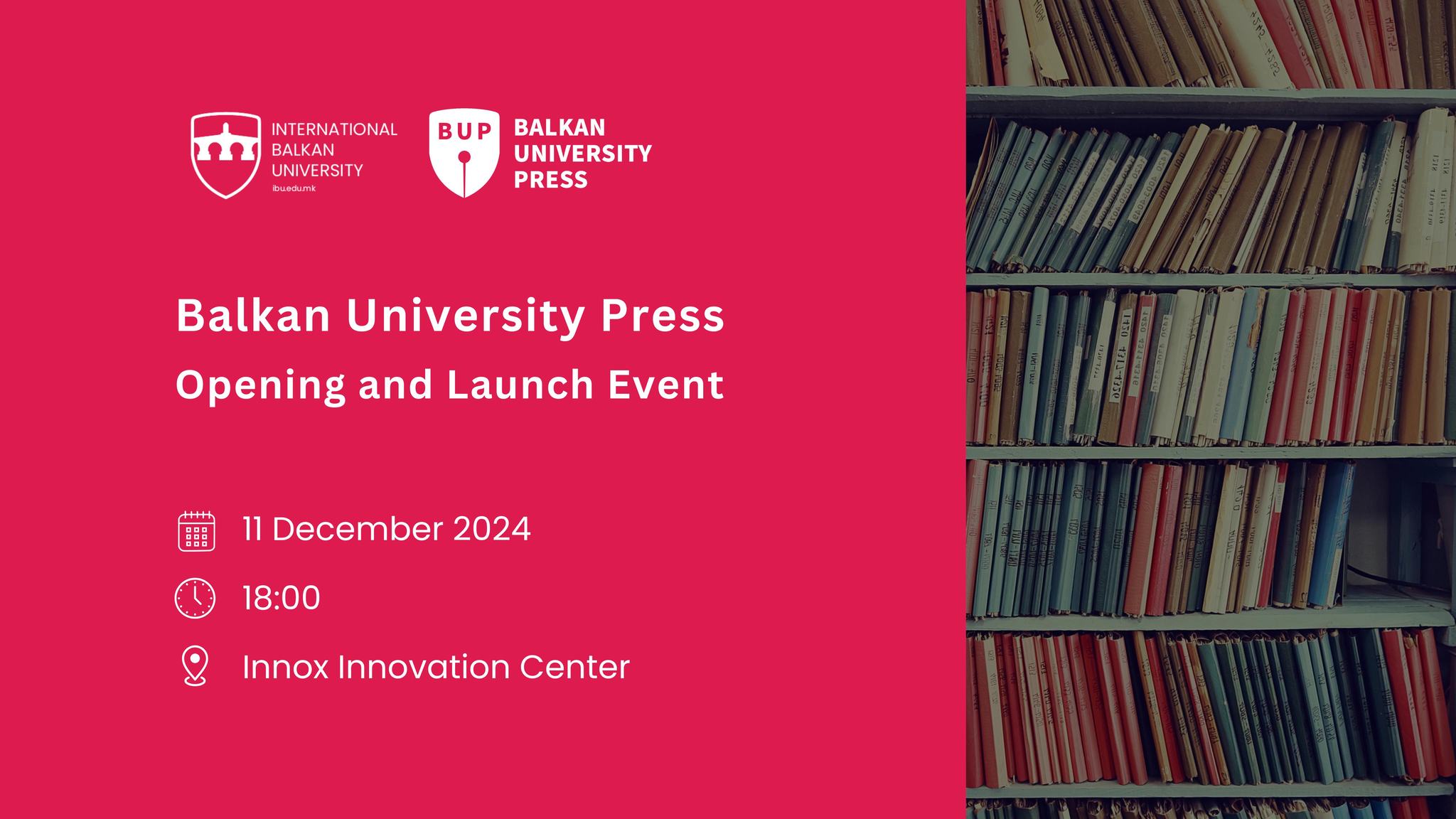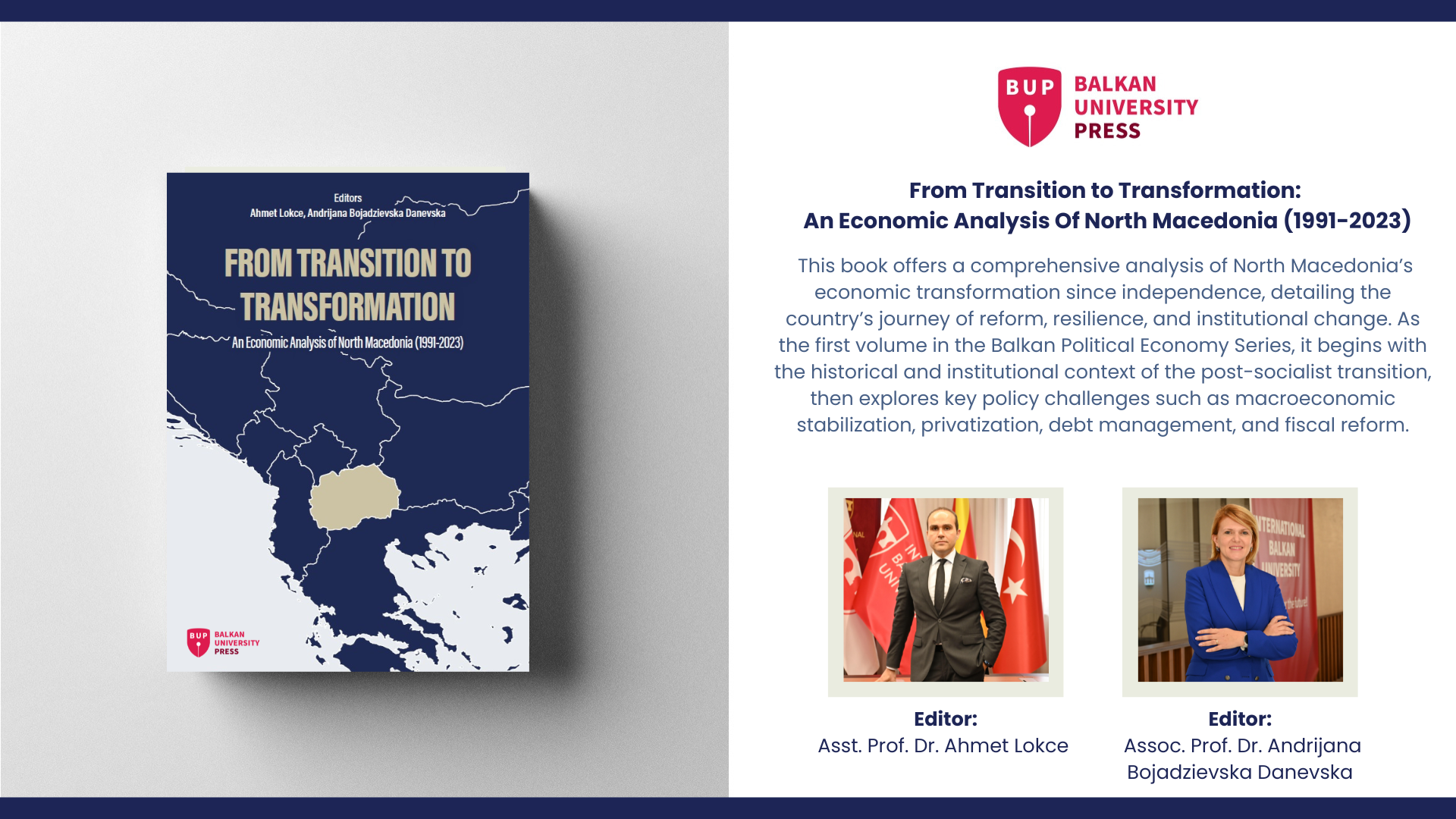BUP Interview with Arbresha Ibrahimi
Balkan University Press is excited to share an interview with our Asst. Prof. Arbresha Ibrahimi on her forthcoming book "Museums as Generators of Identity in Skopje" that is part of the Academic Research book series.
BUP: What inspired you to explore the role of museums as identity generators in Skopje, and how does this perspective differ from traditional views of museums as static repositories of artifacts?
AI: Since I was little, my parents have taken me and my two sisters to various social activities, especially those of a cultural nature. Visits to museums in Macedonia have always left me with a sense of despair. I often wondered why these buildings, which I referred to as 'graveyards,' existed. Apart from the titles of the exhibits, there was no other information provided. I also developed a certain dislike for museums, as they gave the impression of 'get out of the museum as soon as possible.' These unpleasant feelings only heightened my curiosity about why I felt this way during museum visits. This curiosity led me to become more attentive to what was happening in the social, cultural, and architectural aspects of museums. After completing my master's studies, I became more aware of the crises the country is facing, especially the crisis of identity. I began to consider the role of museums and their impact on the regeneration of identity. Since Skopje is a city that often buries the treasures it possesses, I became particularly drawn to researching the role of museums as identity generators in Skopje.
BUP: In your book, you describe museums as spaces where diverse voices converge. Could you elaborate on how museums in Skopje are challenged in fostering inclusion and promoting unity among communities and ethnicities?
AI: Since museums in Skopje have been, and continue to be, under the influence of political structures, their operations are heavily subjected to political pressure. Museums have the potential to give life to the identity of a society; however, political structures have historically targeted museums to advance their ideologies. Unfortunately, the ongoing crisis of social identity in Macedonia has led to the direct and indirect erasure or assimilation of the cultural values that Macedonia, and especially Skopje, have.
In addition to these challenges, museums in Skopje also face extremely poor architectural conditions, with total neglect from the state in terms of funding for building maintenance, artifact research, and staffing. As a result, they fail to seriously prioritize strategies for promoting inclusion and fostering unity between communities and ethnicities. The loss of museum ethics is, in many ways, the death of museums.
BUP: What is your favorite museum in Skopje and why?
AI: It's a good thing you didn’t ask me which museums I dislike the most in Skopje, because I have a few. My favorite museum in Skopje is the Natural History Museum of the Republic of Macedonia. The first reason for this is that it is a museum thoughtfully designed to showcase the rich flora and fauna of Macedonia, with its architecture and location carefully adapted to its purpose. I consider the museum’s strengths to be its quality and research-oriented character, the organization of its storage facilities, and, undoubtedly, the welcoming atmosphere it provides. From an spatial perspective, the building has great potential to revitalize the area where it is located, especially if the city park and the zoo were placed under the jurisdiction of the museum.
BUP: How do you envision museums in Skopje transforming from tools of nationalist narratives into platforms for fostering intercultural inclusion and reflecting the city's diverse socio-cultural identity?
AI: Although the process is multidisciplinary and may seem complicated, I am convinced that for the cultural values the state possesses, it is the best thing we can do for future generations. In addition to institutional redemption, the first and simplest step is to create various multicultural activities that explore different perspectives on artifacts. Along with these activities, museums must adapt their approach to curating exhibitions. Beyond incorporating different perspectives, exhibitions should also be designed in more inclusive ways. By doing this, museums will begin to demonstrate that they are not subjects of national, ethnic, or other prejudices. Instead, they will prove to be institutions of inclusion, serving society rather than political structures and ideologies.These events within museums will, in turn, highlight the importance of regenerating museum spaces and fostering a closer connection with nature and their surroundings.
BUP: The idea of museums as "luminous realms of reflection" is compelling. How do you envision these spaces contributing to healing historical wounds and transforming legacies of exclusion into opportunities for dialogue and mutual understanding?
AI: I firmly believe that if a person sincerely repents for their actions, they will be able to find a way to improve. The same applies to institutions. Since museum architecture encompasses spaces for research, exhibition, and legal-administrative functions, interdisciplinary and social collaborations can help increase museum visits. The architectural design of museums itself facilitates proximity between artifacts, interpretation, and society. This connection between the three core aspects of the museum will contribute to healing historical wounds and transforming legacies of exclusion into opportunities for dialogue and mutual understanding.
Arbresha Ibrahimi is an architect with a Ph.D. from the University of Ljubljana. She earned her master's degree in 2014 from "St. Cyril and Methodius" University in Skopje and her bachelor's degree from the State University in Tetovo in 2012. Her research focuses on the impact of social and cultural buildings on urban identity and community cohesion. Currently, she is a teaching assistant at the International Balkan University in Skopje and has previously taught at the State University in Tetovo and AUE-FON Skopje. Arbresha is also involved in architectural projects, particularly in residential and social buildings, and she is a collaborator at Young Designers Circle within the World Design Organization.



















































.png)



.png)

.png)